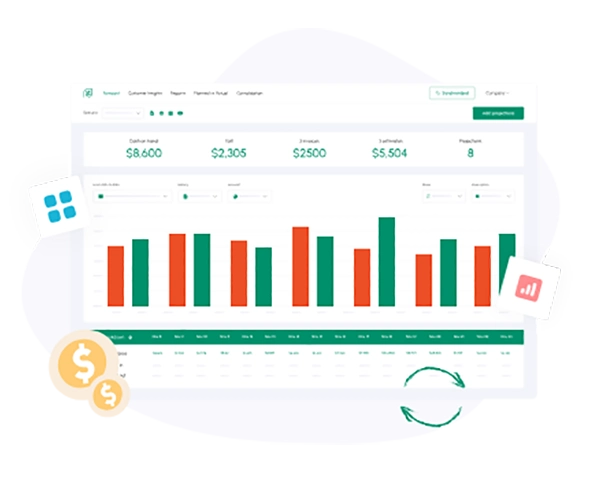
The numerous sales forecasts that appear to show an optimistic picture on paper, like successful projections.
While these ingrained beliefs may seem to be harmless when examined in isolation, holding on to them for a significant period may cost your company millions due to missed sales opportunities.
Waste due to inefficient use of resources or having unsold inventory. It is certainly not easy to remove these longstanding beliefs from your way of thinking, as it is a change of mindset that must be embraced.
To ensure that your sales forecasts are truly accurate, reliable, and capable of making informed decisions, you must abandon these outdated sales forecasting software. Just create a more flexible forecasting methodology with modern sales forecasting software.
Now, continue on to learn about the five most well-established myths surrounding the sales forecasting process. Explore activities you can implement to help remove your company from the costly impacts associated with them.
KEY TAKEAWAYS
- Always revise forecasts to keep them current based on the business’s existing situation and any changes or developments.
- Keep forecasting simple so that it is easier for the entire team to use and understand.
- Sales representative sales quota projections should always include external data to better gauge how realistic your predicted quota can become.
- Forecasting is necessary for every area of your business and not just for predicting revenue.
Did some specific methods work for your business last year? In case you are thinking of reusing them for this year, then your forecast might be in trouble.
Here’s why focusing too much on past data isn’t advisable:
Instead, use past sales as a benchmark, not a roadmap. Then build in what’s happening now along with flexible tools. That’s how you forecast the road, not just the one behind you.

One common sales forecasting error is treating the forecast as a one-and-done document.
But it’s far from it. You need to update your forecasts each time, especially if you have made significant changes in your business, to keep them accurate.
Here’s what will happen if you ignore important updates:
So, make updates part of your routine. With tools like Cash Flow Frog, it’s easy to keep your forecast with minimal effort.
The best forecasts have many elements, such as formulas and charts. But complex does not always mean accurate. It just makes your forecast harder to understand.
Here’s why simpler forecasts often win:
So, keep your forecasts simple and clear. Your team will be able to actually use it every day.

One common sales forecasting myth that can hurt your numbers is that many sales representatives predict their own numbers.
Here’s why:
It’s always best to blend sales rep input with past performance, pipeline data, and conversion rates to keep your forecast reliable. That way, you get forecasts grounded in reality, not just hope.
Forecasts are not only for sales teams. They are for everyone, trying to keep the lights on and the business growing.
When you only focus on revenue, you miss the real magic of forecasting.
Here’s what else is on the line:
Good forecasting ties everything closely together, not just sales goals. With Cash Flow Frog, you can see the entire picture before you make the next big move.
Most sales forecasting mistakes do not come from bad intentions; they come from old habits that no longer work.
The fix? Think less “complete prediction,” more “real-time game plan.”
With a tool like Cash Flow Frog, you do not have to guess. You get clear, living forecasts that help in staying ahead, not playing catch-up.
Have you accidentally run into these myths and mistakes? Share your reflections on what’s tripped you up and what helped you out.
Changes in the marketplace, the emergence of new competition, and various global events can change what that data represents and cause.
Companies should continuously update their sales forecasts, either weekly or monthly.
No. Complicated forecasting models can actually create additional errors and confusion in the forecast.
Cash flow, Inventory Management, and Strategic Hiring and Spending plans of the company are also impacted..
